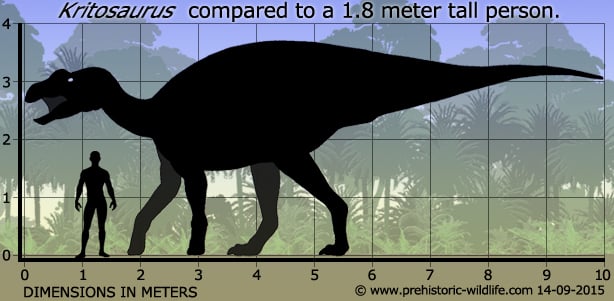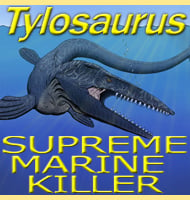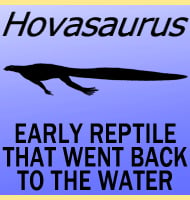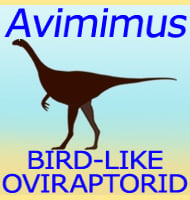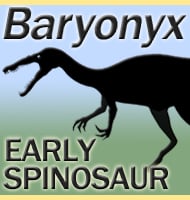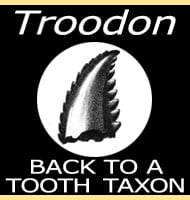In Depth
Kritosaurus was first described in 1910 upon a description of a partial skull that was not only incomplete but partially eroded. To fill in the gaps, Brown used a second skull that would later be referred to Anatotitan to complete the reconstruction. Not all the fragments were used, and the final reconstruction was of a hadrosaurid (duck billed) dinosaur with a reasonable flat snout. Brown seems to have had some suspicions about his restoration and in 1914 when a new genus called Gryposaurus was discovered with a high nasal arch, Brown came to the idea that the Kritosaurus reconstruction should have been more along the lines of Gryposaurus, and this time reconstructing the skull with all the fragments, was able to produce a skull very much like that of Gryposaurus.
It was this reconstruction that actually led to a lot of misinterpretation about the name Kritosaurus. Many sources have credited the name Kritosaurus with meaning ‘noble lizard’ because the arch of the nasal bone bore a superficial resemblance to the hooked nose associated with classical Roman nobility. However as I am sure you can already appreciate, this interpretation was impossible until many years after the name had already been established. Instead the name Kritosaurus actually means ‘separated lizard’ in reference to the separated cheek bones of the holotype skull. On a side note, Barnum Brown had initially intended to call Kritosaurus, Nectosaurus, but was unable because the name had already been granted to a Triassic era thallatosaur. The new reconstruction was also the start of a lot of controversy about Kritosaurus. Not only did Brown recreate Kritosaurus to be similar to Gryposaurus, but he also declared the latter to be a synonym to Kritosaurus. At the time this was supported by many other palaeontologists and all Gryposaurus fossils were renamed and classified as Kritosaurus. With these additional fossils, Kritosaurus went on to become one of the most popular hadrosaurids (though still usually called duck billed dinosaurs) in popular media such as books.
Problems first came to light in the late 1970s to early 1980s when Kritosaurus was considered to be a possible synonym to another genus called Hadrosaurus. By the late 1980s Kritosaurus was once again widely accepted as being separate from Hadrosaurus, but in depth study of Kritosaurus during this time resulted in a new idea; Kritosaurus and Gryposaurus were actually not the same at all. The biggest doubt was centred on the second restoration of the Kritosaurus holotype skull. When first reconstructed, Barnum Brown was working without a frame of reference, but the second time he was working to an existing skull, and doubts are now cast as to if he accidentally made the skull of Kritosaurus to look like Gryposaurus, thus causing the similarity.
In 1990 the palaeontologists Jack Horner and David B. Weishampel separated Gryposaurus from Kritosaurus, resurrecting the genus. However all of the subsequent additions to Kritosaurus after Gryposaurus had been declared a synonym could only be attributed to Gryposaurus because Kritosaurus was only founded upon the basis of a single incomplete skull. This saw two of the original three species of Kritosaurus now regarded as synonyms to Gryposaurus with no further post cranial remains for Kritosaurus.
Further remains attributed to Kritosaurus from have also been referred to new genera. Before the Kritosaurus/Gryposaurus split, a skull from Patagonia, South America was assigned to Kritosaurus in 1984, but this has subsequently been used to establish the genus. Secernosaurus. In 1992, Jack Horner described two more skulls for Kritosaurus, and confidently described them as being quite different from Gryposaurus. However in moves that have since proven controversial, both of these skulls were re-described as new genera by Adrian Hunt and Spencer G. Lucas. These new genera were Anasazisaurus and Naashoibitosaurus, and although some palaeontologists have treated them as valid, others still agree with Horners original interpretation.
At the time of writing Kritosaurus is still only recognised by the original partial skull that established the holotype back in 1910. There has been a lot of speculation about how some new fossil discoveries that may belong to Kritosaurus, but so far these have proven inclusive due to the fact that the fossils cannot be matched up to the skull, particularly the forward portion of Kritosaurus. Additionally although Anasazisaurus has been treated as being distinct by some researchers, there are still suggestions that it should be referred back to Kritosaurus.
As a duck billed dinosaur, Kritosaurus would have at least been similar to other hadrosaurids, primarily walking around on four legs, but being capable of rearing up on two. This would have seen it capable of browsing upon a variety of plants at different heights which could be snipped with the forward beak before being processed by the grinding teeth. Coming from the Kirtland Formation of New Mexico, Kritosaurus might have been preyed upon by tyrannosaurs such as Bistahieversor.
Further Reading
– The Cretaceous Ojo Alamo beds of New Mexico with description of the new dinosaur genus Kritosaurus. – Bulletin of the American Museum of Natural History 28(24):267-274. – Barnum Brown – 1910. – The osteology of the trachodont dinosaur Kritosaurus incurvimanus. – University of Toronto Studies, Geology Series 11: 1–76. – William A. Parks – 1920. – A new species of Kritosaurus from the Cretaceous of Big Bend National Park, Brewster County, Texas. – Journal of Vertebrate Paleontology 21 (3, Suppl.): 110A–111A. – Jonathan R. Wagner & Thomas M. Lehman – 2001. – A re–evaluation of Secernosaurus koerneri and Kritosaurus australis (Dinosauria, Hadrosauridae) from the Late Cretaceous of Argentina. – Journal of Vertebrate Paleontology 30 (3): 813–837. – Alberto Prieto–Marquez & Guillermo C. Salinas – 2010. – Skeletal morphology of Kritosaurus navajovius (Dinosauria:Hadrosauridae) from the Late Cretaceous of the North American south-west, with an evaluation of the phylogenetic systematics and biogeography of Kritosaurini. – Journal of Systematic Palaeontology. – Alberto Prieto-M�rquez – 2013.
